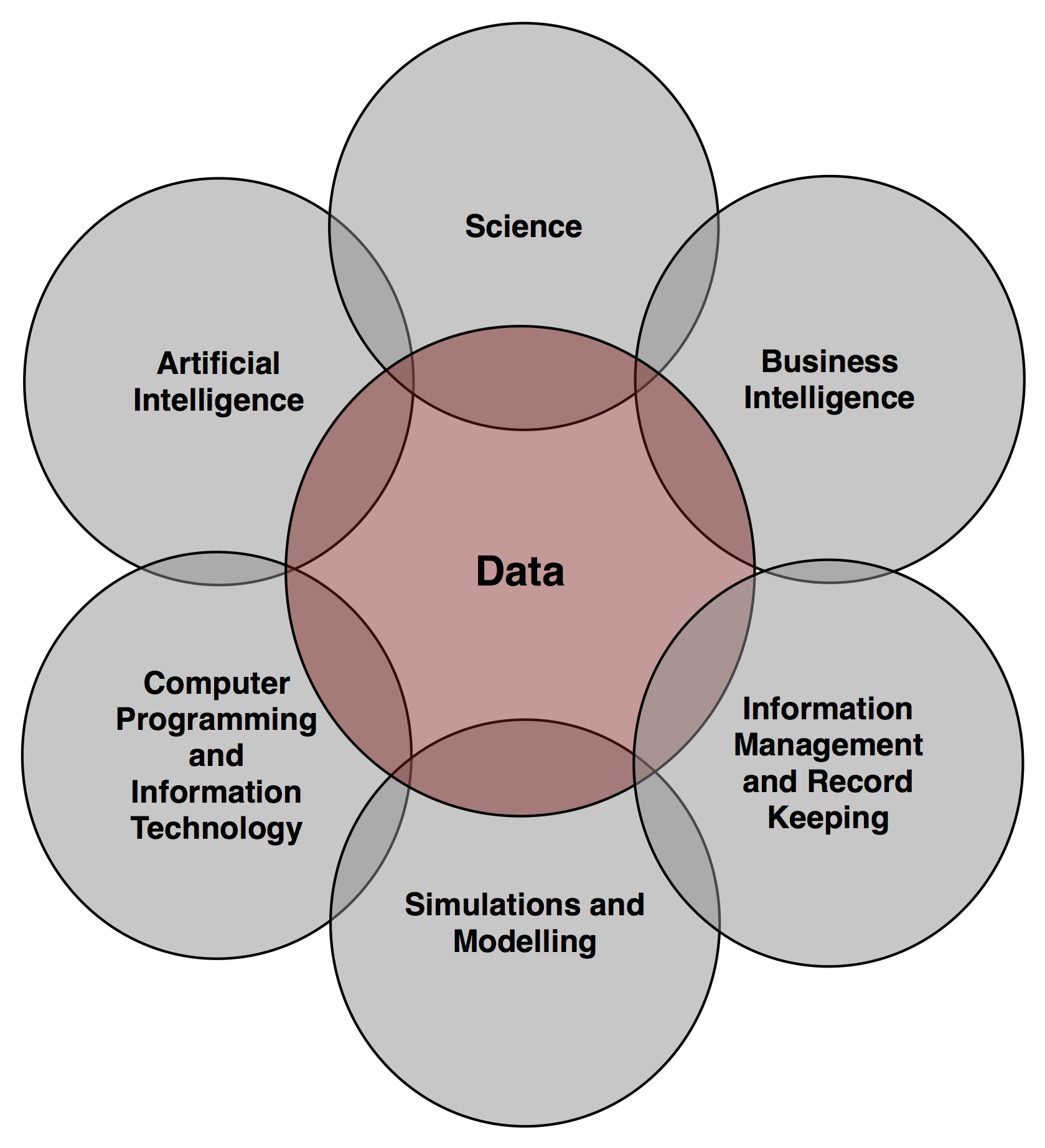
To follow up from my last Data Diagram of the Day post, here’s a very quick run down on how each of the domains in the diagram above use data. The key question to ask yourself here is – how would the domain in question grind to a halt if it didn’t have data?
Science: This domain generates data through experiments, and then analyzes the data to find support for (although not completely prove!) hypotheses. Scientists need data to test their theories and advance science.
Artificial Intelligence: We owe our human intelligence in a large part to the massive amounts of data we are able to take in through our senses. Artificial intelligence is not much different. It wouldn’t be too much of a stretch to say – no data, no intelligence.
Business Intelligence: Business intelligence is again similar to human intelligence, but at an organizational level. Business intelligence uses data to maintain situational awareness of its organization and also to recognize larger patterns of activity and to predict future outcomes. In other words, data is key to business management and business strategy.
Information Management and Record Keeping: These domains tend to deal with unstructured or semi-structured data in the form of records and documents. Again, the overall goal in this domain is situational awareness, but also awareness of (and documentation of) past situations. Because of the unstructured or semi-structured nature of the data, as well as the goal to keep track of this not-very-structured data, meta-data – data about data- also becomes extremely important in this domain.
Simulations and Modelling: Simulations and modelling essentially take limited amounts of data about a system, use this to create a model of that system, and then use this model to generate new data of another type. This new data might be predictions based on new information, or it might be entirely new synthetic data about the system of interest.
Computer Programming and Information Technology: It’s clear that computer programming and information technology are critical providers of tools that other disciplines use to manipulate data. But how is data used with this domain itself? A key type of data in this domain is data about how systems are running – the ubiquitous log file. Effectively, computers are continuously generating and consuming their own data.
In the end, these disciplines use data in the ways that we, ourselves, as information processors use data – to remember the past, to understand what is happening in the moment, to predict the future and to come up with more overarching principals that will apply more generally.
